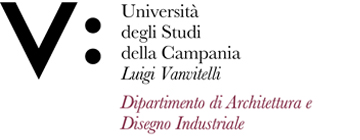Chiara SCARPITTI
Insegnamento di LABORATORIO DI DESIGN PER LA MODA 2
Corso di laurea in DESIGN PER LA MODA
SSD: ICAR/13
CFU: 12,00
ORE PER UNITÀ DIDATTICA: 96,00
Periodo di Erogazione: Primo Quadrimestre
Italiano
| Lingua di insegnamento | ITALIANO |
| Contenuti | “L’adornarsi è antropologicamente più antico del vestirsi, è diretta manipolazione-significazione del corpo, non si aggiunge al vestirsi, fonda il vestirsi. Abito e accessorio modellizzano il mondo, scrivendo storie sul nostro corpo. Tra il corpo e l’ornamento si stabilisce una comunicazione che rende indistinguibile la superficie significante del corpo dagli oggetti che la significano. Sono, infatti, l’abito e l’ornamento che strutturano la corporeità, il suo senso, la sua capacità di comunicare.” Eleonora Fiorani in Moda Corpo Immaginario, 2006. |
| Testi di riferimento | - Carol Belanger Grafton. (1998). Shoes, Hats and Fashion Accessories: A Pictorial Archive 1850-1940. |
| Obiettivi formativi | • Acquisire una metodologia progettuale autonoma e indipendente; |
| Prerequisiti | Lo studente dovrà possedere delle conoscenze di base riguardo l’uso di software come Adobe Illustrator e Adobe Photoshop. È richiesta una padronanza del disegno e della manipolazione basica di vari materiali e tessuti. |
| Metodologie didattiche | Oltre alla bibliografia, una serie di lezioni e schede specifiche verranno fornite agli studenti per un approfondimento dei materiali, dei processi e delle metodologie, come supporto alla costruzione dei progetti. I migliori risultati del Corso verranno presentati a concorsi internazionali nel settore della moda e del gioiello e inseriti in una eventuale pubblicazione. |
| Metodi di valutazione | Il corso sarà caratterizzato da un forte orientamento speculativo-laboratoriale sul progetto del gioiello e dell'accessorio in pelle e sulle tendenze contemporanee internazionali. La prova intercorso sarà focalizzata sull’ideazione di oggetti disruptive per concept e ricerca materiali, cosi da essere un utile esercizio per la sperimentazione materica di ciascun allievo. Il brief del progetto finale s’incentrerà sulla creazione di una capsule collection di prodotti, in grado di raccontare la visione e la filosofia di ciascun gruppo di lavoro. La metodologia didattica utilizzata è transdisciplinare e ibrida manualità e pensiero progettuale, cultura visiva e uso delle tecnologie, tradizione e innovazione. |
| Altre informazioni | L’esame finale consisterà in una presentazione digitale, accompagnata da un book di progetto cartaceo, unitamente alla collezione e ai prodotti realizzati. La valutazione finale terrà conto della media dei risultati individuali raggiunti nella prova intercorso, insieme alla partecipazione attiva alle lezioni frontali e ai laboratori. |
| Programma del corso | Stuttura del corso: |
English
| Teaching language | Italian |
| Contents | “Adorning is anthropologically older than dressing, it is direct manipulation-signification of the body, it is not added to dressing, it is the foundation of dressing. Dress and accessory model the world, writing stories on our body. A communication is established between the body and the ornament that makes the significant surface of the body indistinguishable from the objects that mean it. It is, in fact, the dress and the ornamentation that structure the body, its sense, its ability to communicate.” |
| Textbook and course materials | - Carol Belanger Grafton. (1998). Shoes, Hats and Fashion Accessories: A Pictorial Archive 1850-1940. |
| Course objectives | - Acquire an autonomous and independent design methodology; |
| Prerequisites | The student should have basic knowledge about the use of software such as Adobe Illustrator and Adobe Photoshop. A knowledge of drawing and handling of various materials and fabrics is also required. |
| Teaching methods | In addition to the bibliography, a series of lectures and specific sheets will be provided to students for an in-depth examination of the materials, processes and methodologies of the research, as a support to the construction of the projects. The results of the course will be presented at international competitions in the fashion and jewellery sector and included in a final publication. |
| Evaluation methods | The course will be characterized by a strong speculative-laboratory orientation on the jewelry project and contemporary international trends. The test will focus on the creation of disruptive objects for concept and material research, so as to be a useful exercise for the material experimentation of each student. The brief of the final project will focus on the creation of a capsule collection of jewels that are able to tell the vision and philosophy of each group. The final objective will be to train autonomous designers, through a transdisciplinary teaching methodology that hybrids manual skills and design thinking, fashion culture and use of technology, tradition and innovation. |
| Other information | The final exam will consist of a digital presentation, accompanied by a paper project book, together with the collection and the products made. The final evaluation will take into account the average of the individual results achieved in the test, together with active participation in the lectures and workshops. |
| Course Syllabus | Course structure: |








